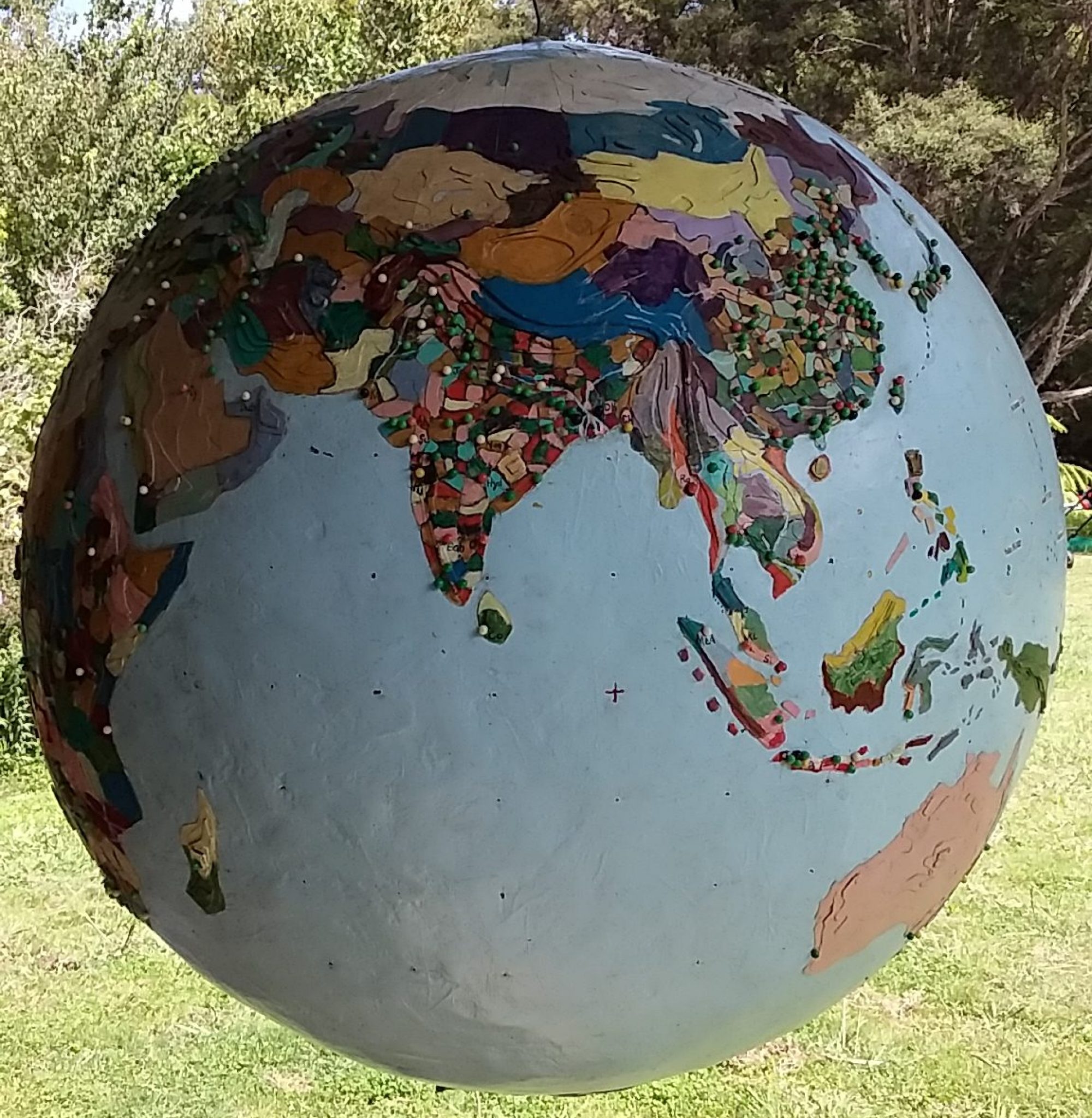The millisphere of Tasmania covers the watershed east and south from the Australian Alps, and includes Melbourne (4.9 million) and the island of Tasmania (half-a-million).

When we visited Tasmania again in October 2001 air travel had changed dramatically. Osama bin Laden had just leveled the “twin towers” in New York and the New Zealand army manned the Auckland airport and the Australian army was there to meet the plane in Melbourne. Australia, New Zealand and the United States are technically in the Cold War ANZUS defense alliance, although in the 1980s New Zealand was “partially suspended” because of its “nuclear free” position.
“No worries mate, this building is owned by the Kuwait royal family,” joked the Lebanese lift operator as I ascend the Melbourne’s Rialto Tower – the tallest building in the southern hemisphere – so I could draw a picture from the top.
 We explored Victoria, including a pilgrimage stop at the Holden Museum in Echuca. At Ballarat we found the site of the Eureka Stockade, now a carpark waiting development, where in 1854, gold miners rebelled against the colonial authority of the United Kingdom and swore allegiance to the Southern Cross.
We explored Victoria, including a pilgrimage stop at the Holden Museum in Echuca. At Ballarat we found the site of the Eureka Stockade, now a carpark waiting development, where in 1854, gold miners rebelled against the colonial authority of the United Kingdom and swore allegiance to the Southern Cross.
Victorian “bush larrikin” and son of a transported convict, Ned Kelly, appropriately born also in 1854, took on the system, denouncing the police, state government, and the British Empire. Ned was still in his twenties when he was captured in Glenrowan and hung in Melbourne in 1880.
We checked out Ned Kelly’s old stamping ground before pointing the Holden east into the Australian alps. In 1890, a decade after Ned’s hanging, Banjo Paterson set his narrative poem, The Man from Snowy River in the Australian Alps. “But the man from Snowy River let the pony have his head … and he raced him down the mountain like a torrent down its bed” celebrates the bush larrikin.
In New Zealand we drive around mountains, in Australia they drive over them. It is a country of “low relief” and we dropped south into Gippsland and back to Melbourne and checked out their art scene. At a contemporary art gallery an installation featured a Holden hearse painted in Aboriginal colours, commenting, I think, on genocide. Modernist painter, Sidney Nolan, portrayed another view of the Ned Kelly mythology and a Melbourne larrikin, Barry Humphries, gave the world “Dame Edna Everage”.
Commenting on the #metoo movement that had drifted across the millisphere of Te Moananui, from Los Angeles, feminist writer, public intellectual and good Catholic girl from Melbourne, Germaine Greer, said “if you spread your legs because he said ‘be nice to me and I’ll get you a job in a movie’ then I’m afraid that it is tantamount to consent, and it’s too late now to start whingeing about it”. You don’t necessarily need to be man to be a larrikin!
Inte rnet larrikin, Julian Assange, studied programming, maths and physics at Melbourne University before helping set up WikiLeaks in 2006. Like a modern-day Ned Kelly Assange attacked the “Nation of Darkness” (the United States), publishing sensitive classified information, but as young Ned discovered there are consequences. “The internet, our greatest tool for emancipation, has been transformed into the most dangerous facilitator of totalitarianism.” said Assange.
rnet larrikin, Julian Assange, studied programming, maths and physics at Melbourne University before helping set up WikiLeaks in 2006. Like a modern-day Ned Kelly Assange attacked the “Nation of Darkness” (the United States), publishing sensitive classified information, but as young Ned discovered there are consequences. “The internet, our greatest tool for emancipation, has been transformed into the most dangerous facilitator of totalitarianism.” said Assange.
The last time we passed through Melbourne we were flying home from Bali. We had just a spent a month in Java which coincided with the month of Ramadan and Indonesia was even more alcohol-free than usual.
“Jeez we had fun, got peesed evree noight” said an Aussie tourist with a beer gut in a singlet at the Denpasar terminal. Transiting through Melbourne, we were met by a young woman with a tray of glasses marketing free shots of a new RTD (ready to drink alcohol), but cigarette smoking had been banned in the entire terminal. In Indonesia they did it the other way around, no one drank in public and everyone smoked wherever they liked.
Anglos united against the rest: New Zealand, Australia, The United States, The United Kingdom and Canada are in “The Five Eyes,” strategic information sharing alliance. Going back to the Second World War, the Five Eyes countries also standardise their military equipment and generally fight together.
American NSA whistle-blower Edward Snowden described the Five Eyes as a “supra-national intelligence organisation that doesn’t answer to the known laws of its own countries.”










